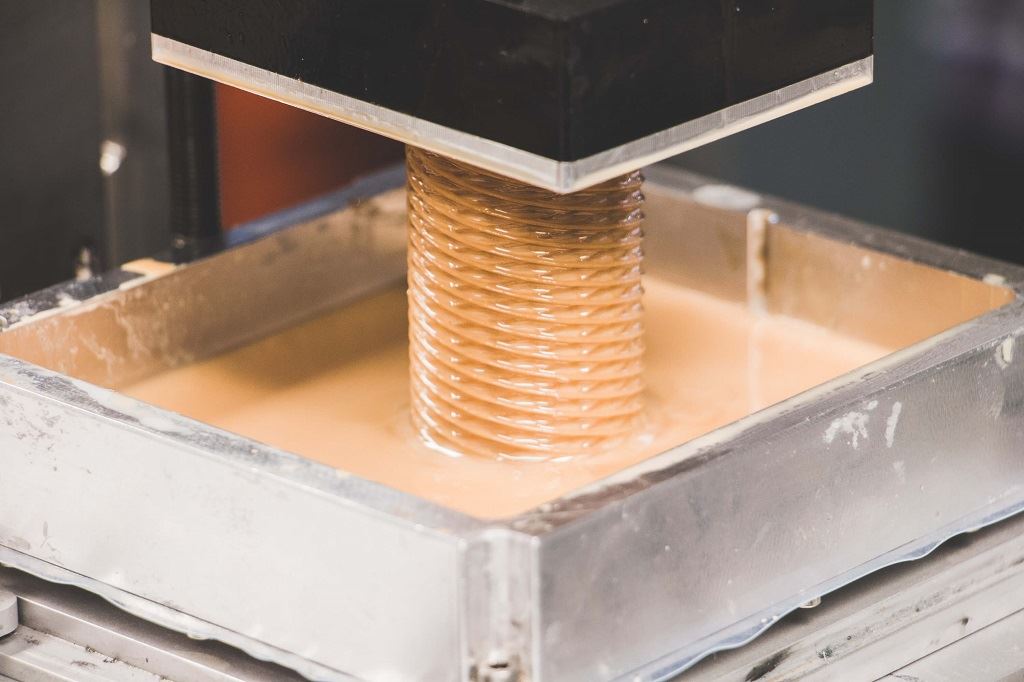![The Fluxprint process [Image: Fortify]](https://fabbaloo.com/wp-content/uploads/2020/05/3D-printing-detail_img_5eb09bf16cebb.jpg)
Fortify and DSM are developing high-performance composite 3D printing materials for structural parts.
The companies have already established their partnership, and today they’re sharing details of the specific focus for their collaborative materials development.
Working together is a major part of both companies’ strategic approaches to additive manufacturing, and this partnership is set to combine expertise in platform, process, and material for strong parts.
The collaboration is through the open Fortify Fiber Platform, through which the 3D printing company is developing its high-performance resins, working with materials partners and its own material scientists and engineers.
Open material systems like the Fortify Fiber Platform and HP’s open materials platform can bring together expertise in hardware and materials for targeted properties. Further collaborations, like with Ultimaker’s Material Alliance Program, bring software into the picture to ensure smooth working with all parts of the ecosystem.
As Fortify CEO Josh Martin told Fabbaloo last month:
“We’ve introduced the Fortify Fiber Platform, inviting materials companies and resin suppliers to develop high-performance resins in conjunction with Fortify material scientists and engineers. This platform is already being embraced by Fortify partners such as DSM, an industry leader in the development of cutting-edge photoactive resins for additive manufacturing. We have developed this program and embraced an open innovation mindset to not have to box our customers into a single, proprietary resin set. Furthermore, by partnering with established and innovative materials companies, we can take advantage of the cross-pollination of ideas to drive truly groundbreaking innovation.”
In today’s announcement, he underscores the importance of the work with DSM. The materials giant has been deepening its investment in additive manufacturing, and Fortify is looking to “leverage DSM’s mature supply chain and years of experience developing advanced materials to expand our resin palette,” Martin noted.
Fortify’s Digital Composite Manufacturing (DCM) platform is based on its patented Fluxprint technology, which brings together magnetics and digital light processing (DLP) 3D printing.
“At DSM Additive Manufacturing, we believe that collaborating with industry partners is key to advance the industry. Partnering with Fortify allows us to develop high-performance composite materials for DLP technology, making the technology viable for functional parts in demanding applications,” said Hugo da Silva, VP of Additive Manufacturing at DSM.
The work with Fortify fulfills part of da Silva’s promise to us a few months ago, when he said:
“We are working very close to printer manufacturers, we have a strong belief in working closely with designers, software, hardware, and materials. Soon there will be more announcements about partnerships, design, and end users.”
The composite materials to emerge from this collaboration will be designed with strong mechanical and temperature properties in mind. Applications are as one would expect for strong structural parts made via 3D printing, with the announcement naming automotive, aerospace, electronics, rapid tooling, and jigs and fixtures. Fortify will also become a distribution channel for 3D printing materials from DSM through the partnership.
Collaborative efforts remain key to future growth in the 3D printing industry. More details about the work between Fortify and DSM give us something to look forward to for strong structural parts.
Via Fortify and DSM Additive Manufacturing











An inventive designer has developed a method for producing 3D paper objects using recycled paper and 3D printed molds.